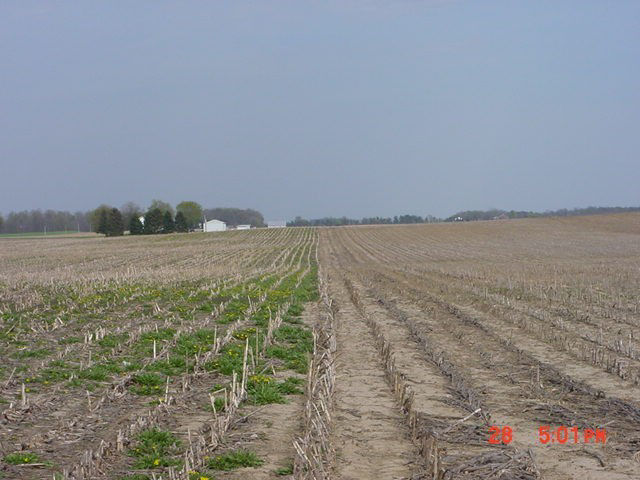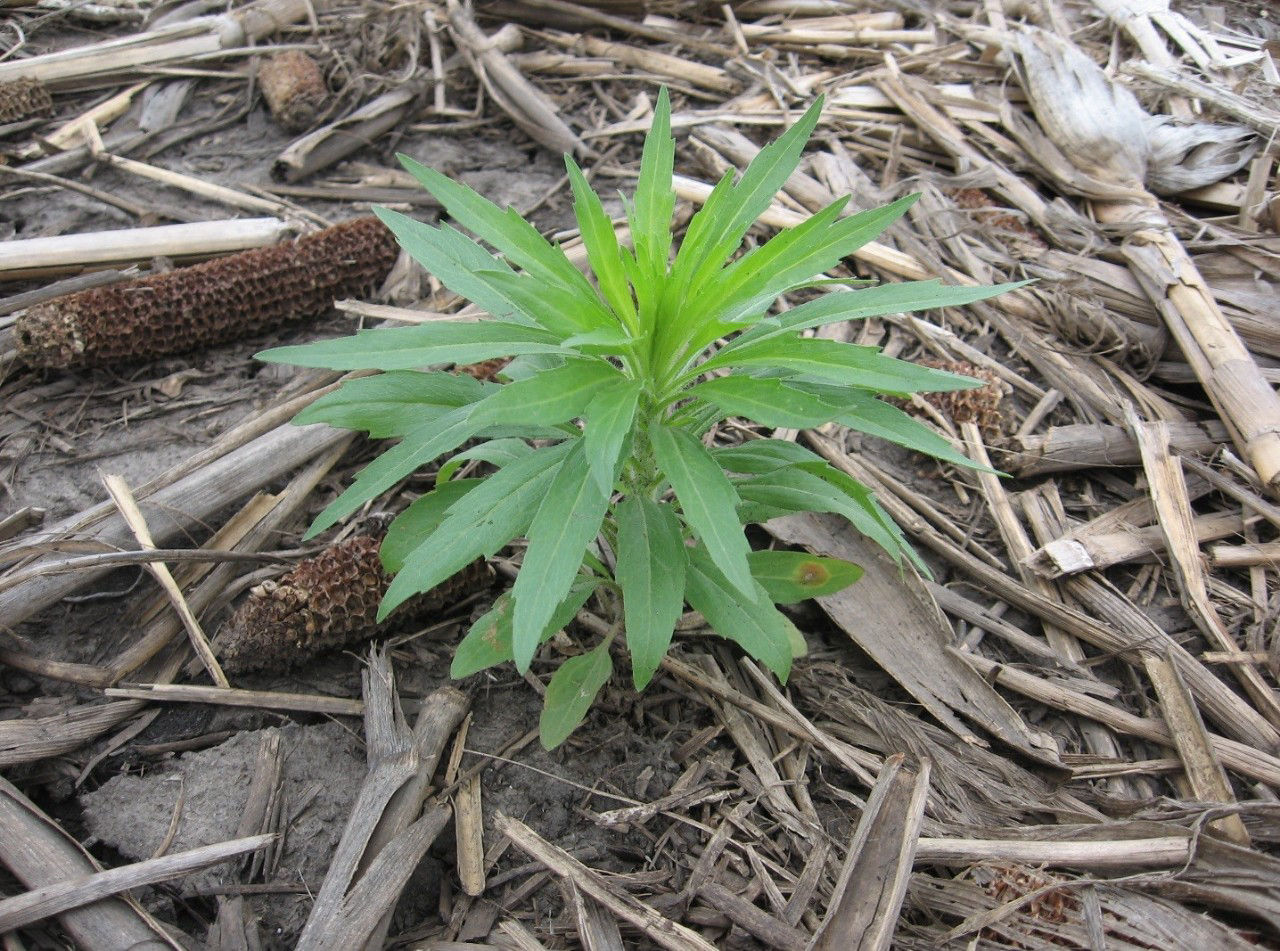5 MIN READ
Benefits and Limitations of Early Burndown Herbicide Applications
February 17, 2025
KEY POINTS
- Appling herbicides to smaller weeds may help improve control.
- Permissible tank mixes with additional modes and sites of action can be used to help control herbicide resistant weeds.
- Effective weed management may help conserve soil moisture.
- When tank mixing permissible herbicides, care should be taken to reduce herbicide antagonism.
Introduction
Early burndown herbicide applications provide an opportunity to manage winter annual and other early emerging weeds before they become difficult to control. Several important factors should be considered when developing an early burndown herbicide program. One crucial decision is which spring crop will be planted. Each herbicide has different plant back restrictions on how quickly a crop may be planted after an application. These planting restrictions include the intended crop and any herbicide tolerance traits that crop may have, and often include the application rate, soil type, amount of moisture received after an application, timing of the application, and temperatures after application. Changing the intended crop can complicate the decision on which herbicides to include in an early burndown herbicide application.

Benefits
Why it is important to use an early burndown herbicide application to control weeds when they are smaller?
Early burndown herbicide applications may provide an opportunity to manage winter annual and other early emerging weeds before they become difficult to control. For example, horseweed (mare’s tail) is a winter/summer annual weed that emerges in the fall or early spring as a rosette and can become difficult to control in the spring once it grows taller than four to six inches (10 to 15 cm) (Figure 2). It is best to control horseweed and other early emerging weeds, like kochia, with a burndown application that is applied when the weeds are small and easier to control.1 Winter annual and biennial weeds are often more difficult to control after they bolt (stems elongate and flower), so an early burndown application is often the best way to control these weed species.2 Ideally, weeds should be controlled four to six weeks prior to planting to allow time for the decomposition of dead weed material, which helps provide a clean field and a better seedbed. Early burndown applications also help to conserve valuable soil moisture that can be used by the crop.
How can early burndown herbicide applications help in the management of herbicide resistant weeds?
The majority of horseweed populations in some areas have developed resistance to glyphosate (HG 9) and ALS-inhibitor (HG 2) herbicides.3 Adding a residual herbicide to a tank mixture is also a proactive approach to help manage herbicide resistant weeds. One of the most important benefits of including a residual herbicide in a burndown application is the opportunity to add herbicides with additional modes of action. It is increasingly important to tank-mix permissible herbicides, not only to increase the spectrum of activity for successful weed management but also to use multiple modes of action for the management of herbicide resistant weeds. Please see product labels for approved tank-mix options and directions.

Are permissible tank mixtures needed in early burndown applications?
Permissible preplant burndown tank mixtures can remove early weed infestations and provide broad-spectrum foliar and residual weed control. Including an herbicide with residual activity in the burndown tank mixture can help extend early season weed control and reduce in-season weed growth. If the intended planting date is 30 days away or more away, a residual herbicide with an appropriate plant back in the burndown tank mixture can also help provide a clean field at planting. One example tank-mix option is atrazine, a photosynthesis inhibitor (HG 5) herbicide commonly added to early preplant herbicide tank mix applications for corn production.
Limitations
What are some of the limitations of early burndown herbicide applications?
The earlier in the spring herbicides are applied, the earlier in the growing season the weed control may start to decline below acceptable levels. It is also important to note that a residual herbicide in an early burndown application may not replace the need for a residual herbicide to be applied at planting. An additional, species-appropriate residual herbicide applied at planting is often needed to provide adequate control of summer annual weeds like waterhemp, Palmer amaranth, morning glory, crabgrass, and barnyard grass. Residual herbicides may also have planting interval, crop rotation, and cover crop plant back restrictions and precautions, which can complicate weed management strategies if the intended crop needs to be changed. It is always important to refer to the label and to not apply more than the maximum amount of any herbicide that can be applied in a growing season, especially if the same product is used for an early preplant application and again in a treatment just before or at planting. Residual herbicide product labels need to be consulted for the minimum number of days that are needed before planting corn, soybean, or other crops.
When is it too cold to apply an early burndown herbicide application?
Fluctuating day and night temperatures are typical in the early spring, and the efficacy of a burndown herbicide application can be reduced by cold temperatures. Daytime temperatures above 55 °F (13 °C) and nights above freezing with sunny days help to improve the effectiveness of early burndown herbicide applications. Weed control can be reduced when daytime air temperatures fall below 40 °F (4.4 °C) for an extended period.1 After a cold spell, it is best to wait for two to three days of warm, sunny weather before applying herbicides and to remember that herbicides work slower under cool conditions. Watch the weather forecast closely and wait for more favorable temperatures to arrive before making a burndown application. However, it may not always be possible to delay an application because of the size of weeds or other considerations. If an application must be made during persistent cool conditions, the application rate may need to be increased or a permissible tank-mix partner may need to be added to help encourage the best chance of success.
What is herbicide antagonism?
Herbicide antagonism happens when certain herbicides in a tank mix interfere with one another’s effectivenss.1 Many of these antagonisms are well known, so is important to consult with local extension herbicide experts, ag chemical suppliers, ag consultants, or seed professionals for any known herbicide antagonisms that might occur with a new early burndown herbicide program. Some antagonism can be overcome by increasing the application rate of any herbicide with reduced effectiveness, while targeting the weed species that are most important to control.2 Always read and follow the herbicide label instructions.
Sources
1Lingenfelter, D. 2024. Spring burndown: Consider spraying early, but with what? PennState Extension. https://extension.psu.edu/spring-burndown-consider-spraying-early-but-with-what
2Anderson, M. 2024. Weeds took advantage of a mild winter. Iowa State University Extension and Outreach, Integrated Crop Management. https://crops.extension.iastate.edu/cropnews/2024/03/weeds-took-advantage-mild-winter
3Jha, P. 2023. Considerations for burndown herbicide applications this spring. Iowa State University Extension and Outreach, Integrated Crop Management. https://crops.extension.iastate.edu/blog/prashant-jha/considerations-burndown-herbicide-applications-spring
Web sites verified 12/23/2024. 1323_100851
You may also like...
Here are some articles that may also be of interest to you